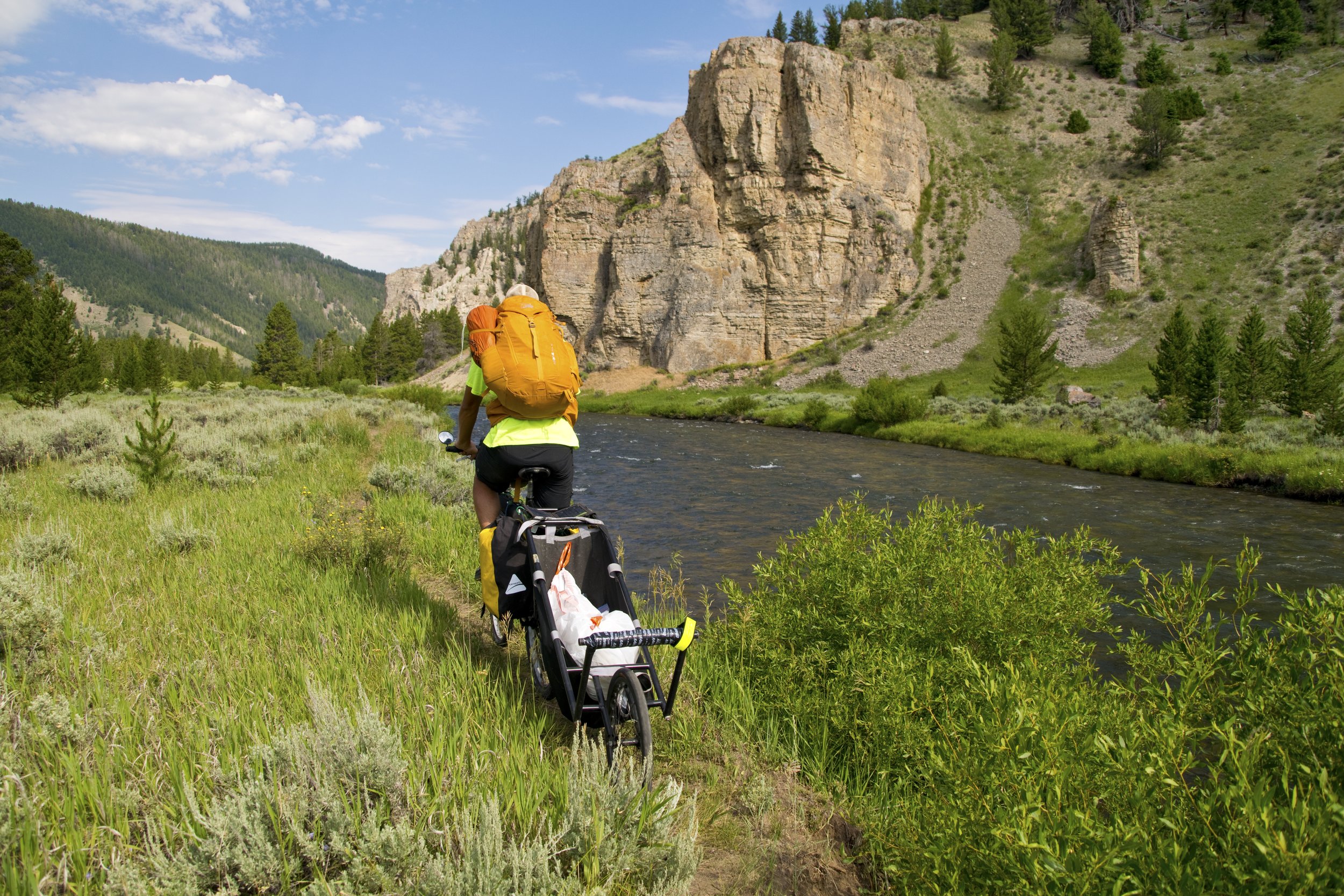Garbage on the Gallatin: A Plea for Plastic-Free Parks
This article is written by 5 Gyres Ambassador Sean Jansen. Sean is a writer, wilderness guide, and adventurer. In this excerpt, Sean shares his experience cycling the length of the Gallatin River, which flows through Yellowstone National Park, and collecting trash along the way. His story is one of determination, resilience, and coexistence with the natural world.
The bugle of the distant elk echoed throughout the valley as I watched my ride drive away, leaving me at the meeting place of the Gallatin River and Highway 191. The brake lights shrank into the distance as I was left on the side of the road with nothing but my bicycle and a fly rod. I was deep within a bear management area in the Northwest corner of Yellowstone National Park - alone.
I’ve had the pleasure of fishing the Gallatin River in southwest Montana for 25 years. My deepest expression of gratitude to the river, its trout, surrounding flora and fauna, and the nearby highway was to pedal the full 142-mile length, traveling every accessible road along its path while picking up garbage in areas frequented by fishermen and outdoor enthusiasts.
As I left the roadside parking lot, where the Gallatin River meanders down from an inaccessible, high alpine lake, my efforts to pick up trash became overwhelming. The roadside was littered with cigarette butts and beer cans, and leftover shrapnel from auto accidents dotted the landscape in disturbing and populous form.
Fourteen miles of the Gallatin River flow within Yellowstone National Park. In that section alone, I collected one full household garbage bag of waste, including a Nalgene water bottle that I kept and will reuse in the future. But when there weren’t obvious pieces of garbage, I got to enjoy the journey and marvel at the beauty of the national park. I heard the Sandhill Cranes gawking at me as I rode by and watched the river oxbow at every opportunity the banks allowed. A calming sensation of wanderlust overcame me, absent to all things except those that were right in front of me.
The next day brought me to Big Sky, Montana. To this day, I still think it has some of the most beautiful water I’ve ever seen, and I’m not the only one who feels that way. Robert Redford famously used this section of the river in scenes for his fly fishing film, A River Runs Through It. Unfortunately, its beauty also attracts visitors, and the shoreline was littered with discarded pleasures of our taste buds.
I continued to pedal, winding, twisting, and turning with the ebb and flow of the river, following it home for the night. The rumors about the upcoming section of highway were terrifying, with no guardrail or shoulder from the lane and blind curves that left cyclists exposed to long-haul truckers. But if I were to achieve my goal of pedaling 50 miles to the Missouri Headwaters State Park, where the Gallatin River converges with the Jefferson and Madison Rivers to form the Missouri, I had no choice.
So after a sunrise cup of coffee and a quick trash dump at the campground garbage bin, I was off, dodging several-ton pieces of metal and plastic powered by gasoline and rubber. They came in waves – cars, semi-trucks, and camper vans. Finally, I made it to a bumpy dirt road with limited public fishing access, masking the true bends and pools of the lower Gallatin.
In all my years visiting the Gallatin, I had never laid eyes on these next couple sections. The dirt road curved away from the water but gained elevation, granting me the gift of sweeping views of the Bridger Range and the continuing oxbow of the river I’d been chasing for two days.
Perched in elevation, I gazed at the gloriousness of the Gallatin, trapped by the confluence of wealth and the environment, within old and new Montana money. The drastic change in landscape was apparent. The area was populated with million-dollar homes, rather than flocking birds or the carefree grizzly bear back in Yellowstone. Sadly, this was not the only blemish on this landscape.
In this area, private land gobbles up river access like a trout feeding during a summer hatch. For 20 miles since leaving the canyon, there were only five access points where one can fish. Naturally, these spots were overpopulated, overfished, and strewn with litter. Overwhelmed by the sheer amount of trash that needed to be picked up, I didn’t even fish until the end of the trip.
As I leaned down to pick up a piece of trash, I looked at the river and saw trout nestled on the bottom, seeking out cool spots. The irony of the trip was realized right there in that moment: humans can destroy virtually everything, but Mother Nature is resilient. Nature can co-exist despite our irresponsibility.
As I made my way from the end of the Gallatin to the beginning of the Missouri River, the end of the journey was near. A slow bend of final stretches begged for a fly to be drifted, the last fish of the trip. I ended the evening by rolling the sleeping pad out, watching the sunset below the headlands, and waiting for my ride to come and take me home.
Ultimately, I had collected three large garbage bags full of all sorts of rubbish during the trip, including a popped, inflatable raft that wouldn’t fit into the bags. The sense of satisfaction in doing my small part was there for me. Still, I know that my efforts barely made a dent in the relentless wave of trash that accumulates along the Gallatin River and adjacent highway – like a tiny chip in an unbreakable windshield.
I returned to a few of the spots a week later in my car, just to see if I had made even the slightest difference – all to realize my efforts were rendered nearly useless by a new wave of garbage. I am uncertain what it will take to overcome our complacency and resistance when it comes to our reliance on plastic. But what I do know is that we should be grateful that nature is as resilient as she is. For if she weren’t, I’m sure the Gallatin, along with other rivers all over the globe, wouldn’t be what we all know them as today.






